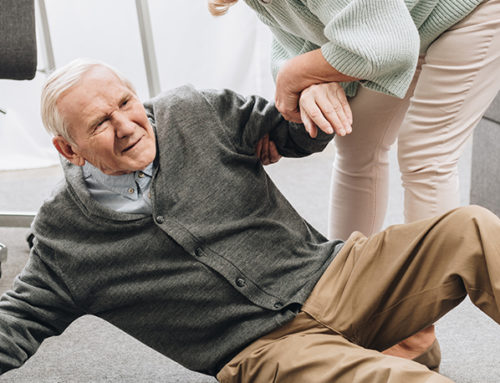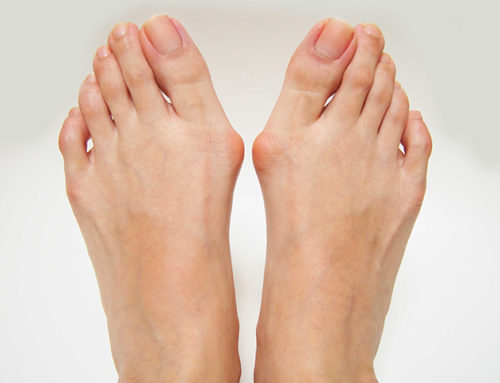Is the “rule of thumb” useful in fitting shoes?
How do you teach a parent the necessary steps to verify that their child’s shoes fit properly?
Is a “thumb’s width” all that is necessary? Does this space requirement change as the child’s foot grows longer? The answers to these questions may surprise you, as recent studies provide interesting insight into the challenges of fitting shoes properly for a growing child.
Allowing adequate volume inside shoes worn by children is critical to reduce the risk of acquired deformity which can carry forward into adult life.1-4 In last month’s blog in Podiatry Today, I presented the results of several studies which showed early development of hallux valgus deformity in young children wearing too-short shoes.5 Those studies showed that ill-fitting shoes are most prevalent in children during the period of rapid foot growth which occurs in girls, at age eight-to-nine and in boys at age nine-to-10.6,7 The take-home lesson is that during this age range, it is important to verify correct fit of shoes on a monthly basis. However, there is a challenge in knowing what steps are necessary to determine if these children’s shoes indeed fit properly.
According to the Merriam-Webster dictionary, the “rule of thumb” is “a general principle regarded as roughly correct but not intended to be scientifically accurate.”8 A well-accepted literal “rule of thumb” followed by many shoe fitters and parents uses the width of the examiner’s thumb to determine the amount of space between the end of the toes and the end of the shoe.9 The lack of reliability of this measurement is borne out by studies which show that the average width of an adult’s thumb varies considerably, ranging from 11 to 27 mm in males and from 10 to 24 mm in females.10,11 Clearly the rule of thumb, when applied to shoe fitting is not a scientific process.
More important, there is debate and misunderstanding regarding how much room a foot requires inside of a shoe. Whether in a growing child or in an adult, the recommended distance for the gap between the longest toe and the end of the shoe is quite arbitrary, varying between 10 to 20 mm.12-16 This raises some important questions:
-
How much space is necessary between the foot and the inside of the shoe of a growing child?
-
Should there be different space requirements for an adult compared to a child?
-
Is the “rule of thumb” reliable in determining correctness of shoe fit?
Is The Rule Of Thumb A Reliable Tool To Verify Shoe Fit?
Barisch-Fritz and coworkers conducted a fascinating study of this rule of thumb to determine its usefulness in determining the actual space or toe allowance (TA) needed in children’s shoes.17 The researchers examined an exceptionally large subject pool consisting of 2,554 children using a new scanner system, called DynaScan4D, which allows three-dimensional (3D) capture of essential foot landmarks during walking.
The authors defined three criteria which affect fit of footwear: toe allowance (TA), which is the space required from the end of the foot to the end of the shoe; foot length (FL), which is the actual foot length of the wearer; and shoe length (SL) which is the internal length of the shoe. One should note that none of these measures actually take into account the three-dimensional shape, width, and girth of the foot or the shoe.17
Researchers measured the medial ball length, which is the distance from the posterior heel to the head of the first metatarsal, in both a static weight-bearing condition, and also during dynamic gait. They also measured the anterior excursion of the toes during gait starting at heel rise and ending with forefoot lift-off at the start of swing phase.
As expected, Barisch-Fritz and team observed that the feet of growing children lengthen during dynamic gait compared to static stance, ranging from 1.6 to 2.5 mm.17 Anterior migration of the toes inside the shoe after heel rise ranged from 0.6mm to 2.0 mm. By comparing these figures to the growth rates of the children in this study, they calculated the necessary TA in footwear required for proper fit. This required toe allowance equates to 9.8 mm for female children and 11.5 mm for male children.17
Can You Use The Rule Of Thumb To Verify Correct Toe Allowance?
Studies show that the average thumb width of an adult is one inch, or 25 mm.10 However, thumb widths vary significantly among adults ranging from 11 to 27 mm in males and 10 to 24 mm in females.11 Since only 10 mm of TA is needed, the rule of thumb is not accurate for determining the necessary toe allowance for growing children as it will most likely over-estimate the necessary room needed at the end of the shoe.
Do Longer Feet Need More Toe Allowance?
Contrary to popular belief, children need the same toe allowance inside the shoe as adults, despite the difference in foot size. Barisch-Fritz and team showed that longer feet actually require LESS space at the end of the toes inside the shoe.7 This is based upon the fact that elongation of the foot during dynamic gait does not vary according to foot length, while one must make allowance for growth in children. Adult feet have no growth and therefore need less space at the end of the shoe.
Other Factors To Consider
The observation that feet elongate during walking is not consistent among all individuals. The study by Barisch-Fritz and colleagues showed that some children demonstrated shortening of the foot during gait compared to static stance.7 The authors cited several studies which showed how muscular contractions and the windlass mechanism operating during dynamic gait could raise the medial longitudinal arch and shorten the foot.17,18 Therefore, it is possible that properly fitted shoes may actually become over-sized in some children during dynamic gait.
In another study led by Barisch-Fritz, an interesting observation was made regarding the change of children’s foot shape during ambulation compared to static stance.19 The researchers found that in children’s feet, circumference of the midfoot (ie, girth), was smaller during walking than during static stance. In contrast, there was pronounced widening of the forefoot during gait compared to static stance. In fact the forefoot widens to the same magnitude (1.5mm) as the entire foot lengthens when comparing dynamic gait to static stance.19
Widening of the forefoot, in comparison to overall foot length appears to be a unique feature of a child’s foot compared to the foot of an adult. Evidence verifies that the ratio between foot width and foot length in humans decreases over time during growth.20 However, footwear manufacturers do not always take this fact into consideration when designing lasts for children’s shoes. A study conducted by Herbaut and coworkers verified that there is abnormal pressure exerted on the first and fifth metatarsals in tennis shoes worn by children even when properly fitted for length.21 The authors concluded that most manufacturers use scaled-down lasts of adult feet to construct children’s shoes and this fails to take into account the need for wider forefoot dimensions in the growing child. In many cases, the only option is to increase the length of the shoe beyond the usual 10 mm of TA in order to gain the proper allowance for forefoot width. Herbaut, et al showed that a child’s perception of comfort is a reliable determiner of proper volume of shoes in the forefoot area and should be taken into account during the fitting process.
Another study showed that correct fit is a bilateral determination, as no two feet are the same size in a growing child. An investigation conducted by Kinz and co-workers studied 620 preschool children in Japan and found that 85 percent of the subjects wore indoor shoes which were too short.22 In terms of outdoor shoes, 75 percent of the children wore shoes of insufficient length. They attributed the high incidence of improperly fitted shoes to the fact that most of the children in the study had significant difference of foot length when comparing right and left feet, varying up to five mm. Thus, a shoe could be properly fitted on one foot, while being a half size too short on the other. As seen in previous studies, Kinz and team showed that increased hallux valgus angle in children was associated with shoes which were too short. The data from this study showed that the shorter the shoe worn by the child, the greater tendency for an increase in the hallux valgus angle. However, the hallux valgus angle was smaller in those children who were barefoot indoors, compared to children who wore shoes indoors. The researchers concluded that increased hallux valgus angles are less likely in children who are allowed to be barefoot indoors, regardless of whether their outdoor shoes are properly fitted.
Summary And Recommendations
1. Recent research has verified a long accepted notion that a child’s foot requires 10mm of space between the end of their longest toe and the end of the shoe.
2. Since the average width of an adult’s thumb is 25 mm, the “rule of thumb” will overestimate the required toe allowance space inside a child’s shoe
3. A parent should receive education about the 10 mm requirement for toe allowance and advised to measure their own finger width (not the thumb) to determine whether this can be a useful tool to verify proper shoe fit (see figure above).
4. The static assessment of shoe fit should take into account the fact that a child’s foot will narrow in the midfoot region and widen in the forefoot region during gait. Therefore, during walking, there will be a tendency for anterior slippage of the foot and greater pressure of the shoe against the metatarsal heads.
5. A child’s perception of comfort should be a deciding factor when determining the proper fit of shoes both in static stance and during ambulation.
6. All challenges of shoe fit are solved by allowing the child to go barefoot, particularly while indoors.
REFERENCES




